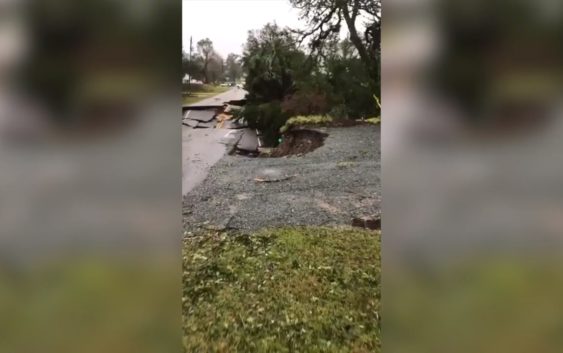- National memorial to honor NC firefighter who died on duty during Hurricane Helene
- Gov. Josh Stein extends State of Emergency for western NC wildfires
- Governor Stein extends state of emergency for NC wildfire threat
- Governor Stein extends emergency in 34 NC counties amid wildfire threat
- Texans can buy emergency preparation supplies tax-free April 26-28 ahead of severe weather season
We have to learn from the mistakes of Hurricane Matthew

If recent history is any guide, we’ll still be hearing about the Hurricane Florence recovery effort well into 2020.
The recovery from Hurricane Matthew — which flooded large parts of Eastern North Carolina in October 2016 — was still creeping along as Florence hit the state. Just a week before Florence, Gov. Roy Cooper’s administration announced the hiring of three state-funded employees to help the small town of Fair Bluff rebuild.
Before life could return to normal, many of the same communities are experiencing flooding from Florence. This time, our state must learn from the mistakes of Hurricane Matthew and do better. The victims of Florence shouldn’t have to wait two years to get federal and state assistance.
The immediate state and federal response to Matthew worked well. The problems arrived in Matthew’s long-term recovery: Some homeowners are still awaiting funding to help repair and rebuild their homes. Tourism-driven coastal communities were quick to recover, but low-income inland communities have felt forgotten. The application process for federal aid was full of red tape, and state agencies were slow to distribute the money once they finally got federal approval.
Last month, state leaders started spending a $236 million federal Hurricane Matthew recovery grant in Robeson County, but were still awaiting federal environmental approvals to spend the money in 21 other affected counties. It’s unclear what happens now: Will the money flow to Florence victims too? What about the communities that may have flooded twice?
Given the anemic federal response to Matthew and Hurricane Maria in Puerto Rico last year, North Carolina leaders can’t rely too heavily on FEMA. In the past, the state has been hesitant to spend money on recovery needs that are eligible for federal money.
But if federal recovery money takes years, it’s up to the governor and legislature to step in and make sure homes and businesses can be repaired and rebuilt sooner. Legislative leaders have already said they expect a special session to allocate state disaster funding.
State government is in a good position: The “rainy day fund” has grown to $2 billion, thanks to prudent actions by the legislature. For comparison, that amount equals about 8 percent of annual government spending. The legislature allocated a total of $326 million in the wake of Matthew , which caused an estimated $4.8 billion in damage.
“My colleagues and I need to remember that is why the rainy day fund was fully funded,” Rep. Chuck McGrady, R-Henderson, said on Twitter last week.
State leaders also must make tough decisions for areas that have flooded repeatedly. Thanks to climate change, devastating hurricanes and flooding are becoming more common. We can’t afford to keep rebuilding on land we know will flood again.
North Carolina must expand its Hazard Mitigation Grant Program, which helps elevate buildings as well as buy and demolish flood-prone properties. In some cases, participation in the program must be mandatory. Princeville, the historic African-American community near Tarboro, has been working on a model for saving communities while shifting away from flood-prone areas. The state helped buy a 53-acre property after Matthew that sits on higher ground.
Cooper and Republican legislators also must resist the temptation to make Hurricane Florence a political football. Some cynical politicos have been trying to make Hurricane Matthew’s slow recovery an election issue.
Sure, we’ve got a key election in less than two months. But Hurricane Florence demands bipartisan leadership.